It’s finally here. Underhell Chapter One has just been released, and as expected, GND-Tech is here to bring you early coverage and insight about this very unique title. Underhell is a Source mod, meaning it’s free, and all it requires is Source SDK Base 2009 which is also free on Steam. A lengthy (15-20 hours), unique game for free? Sounds too good to be true.
Underhell was one of our most highly anticipated mods, since the Prologue showed just how unique it is, and how much effort was put into it. It is constantly ranked #1 on ModDB, as of its release. The lead developer is not afraid to go too far, since he doesn’t have to worry about catering to mainstream audiences. Underhell is a unique blend of story driven psychological horror, survival horror, and stealth.
It’s hard to consider it a mod, given the quality and attention to detail, combined with the fact that it has 24 voice actors with over 3,500 lines of dialogue. Let’s see just how impressive it really is.
Closer Look
“When I count to ten, I want you to open your eyes…”
Since Underhell is a Source mod, it can be obtained for free. Simply launch Steam, click on your library, choose Tools, and right click on Source SDK Base 2007. Then click Properties, and look under the Beta section. Make sure it’s set to steampipe. Then install Source SDK Base 2007, and once this is done, download and install Underhell.
http://www.moddb.com/mods/underhell
Chapter 1 includes a revised prologue, which is great for those who never played the prologue previously. You take on the role of Jake Hawkfield, a SWAT member whose wife recently passed away, seemingly due to suicide. The events of her death, as well as your troubled background, are a mystery, and they follow you around wherever you go.
The core game uses a distinctive design: it’s somewhat hub-based. You start the game in your house, which is haunted and in possession of many secrets and many answers if you choose to find them. The house itself is all about exploration; finding your wife’s diary entries to help piece together the events behind her mysterious death, unlocking doors and discovering what lies behind them, and of course, many dynamic supernatural events.
The house is one of the most brilliant displays of horror, you won’t find many games that compare to this. Pretty much anything can happen; doors open by themselves, objects go flying, you may receive disturbing phone calls, the piano might start playing by itself, you might witness strange figures moving about, and much more. Just about all of these are dynamic and randomized, but some special, horrifying ones have unique triggers. There are also more normal events, such as a fuse blowing out and the house losing all power, which is quite terrifying considering the nature of the house.
Why is this happening to you? What does it mean? You’ll have to explore these questions and others on your own, without any real assistance. Underhell minimizes its use of objective markers in order to allow and emphasize exploration, since Underhell looks to provide a detailed world.
Chapter 1 adds over 50 new dynamic, randomized supernatural events and expands on the house greatly. This speaks for itself.
In addition to mysteries and supernatural events, the house is impeccably detailed and provides the player with things like email and actual mail, which update over time. You can go back to the house dozens of hours later and find new mail waiting for you. Some of the messages reflect on the recent loss of the protagonist’s wife, but others extend far beyond this.
In the garage, you can find a wall of shelves that list trophies you collect during the game. Not actual trophies, but symbols that represent special things you’ve done during the game such as doing a certain mission undetected. A tutorial mission is also included in the prologue, to help familiarize the player with basic gameplay mechanics. It can be seen in the above video. I hear that this tutorial mission has some characters from Nightmare House 2, since they take place in the same universe. There are other NH2 easter eggs scattered around, but I honestly can’t point them out since I haven’t played NH2 in a long time.
The house also has a dream sequence: going to sleep at night triggers this, unless you set up your dreamcatcher. The dream sequence also revolves around psychological horror, and you’ll encounter more of them throughout the entire game. Hints, clues, and metaphors relating to the storyline can be found in these sequences if you look closely enough. There is just a lot of detail in the storytelling; paying attention to things in the dreams, or in your wife’s diary, in-game dialogue, and more can help you make connections to other parts of the story later on.
You can leave the house at any time, beginning a mission. You can also return at any time, though if you return later on, there may be new mysteries to discover within the house. The story in the house is connected to the main game, but at this point there are of course a lot of blanks to be filled. Chapter One raises more questions than it provides answers, which really does get the player thinking and keeps them on the edge of their seat.
The first mission is the Prologue mission, a 2 hour generic tactical FPS sequence. What starts off as a hostage situation slowly becomes something more sinister. This prologue mission is quite ordinary, with the exception of the gameplay mechanics which I’ll go over later, until the very end. This is usual: developers tend to start off their games with something more familiar, often a shooter sequence. It is seen in all three Mass Effect games and Deus Ex: Human Revolution.
It’s worth noting that the prologue mission has a hidden, but straightforward side quest that most players miss. At least this generic action mission has good detail like the rest of the game. Take level design for example, you’ll enter a hospital that’s the place of a hostage situation. You’ll find all sorts of scattered medical materials around the place, as if actual people ran through there in a rush. There’s also a lot of NPC diversity, mostly for enemies. The amount of enemy designs is higher than most shooters, and armor isn’t just for show: armored enemies are much harder to take down.
Disastrous and mysterious events at the end of the prologue lead you to chapter 1, Welcome to Underhell.
As the name and above video suggests, chapter 1 takes place mostly in a secretive underground facility. Like the rest of the game, it’s shrouded in mystery, and as you progress through the story you’ll find out more about it. The facility is essentially a military prison, though it’s exact purpose is kept a secret since the facility doesn’t officially exist. Along the way you’ll see how conspiracies and government control are recurring themes, though if you analyze the psychological horror side of Underhell, you’ll also find much more.
The introduction to this place is impressive; it reminds me of The Shawshank Redemption, when Andy Dufresne was “introduced” to the prison. The tour lasted me about 45 minutes; along the way you’ll find lots of ambient dialogue, and toward the end there’s a quest that branches out in several ways, depending on the player’s actions. You’ll also find many side quests throughout the game, some of which are hidden. They are all optional but will make your life much easier if completed.
This facility is suffering from some sort of outbreak; a disease that rots peoples’ skin and organs. Although some victims seem to have died from this, after a while both inmates and guards are turned into zombie-like creatures. They overrun the facility, and this is when things pick up in Chapter One. Most of it takes place within this facility, and character development along with survival becomes a focus. The two combined makes things incredibly intense. Toward the end you will be rooting so hard for Jake and the other survivors.
The story is topped off with a powerful emotional moment near the end, which comes out of nowhere and is brilliantly placed. This moment is surrounded by all sorts of well implemented mind games (‘games’ isn’t the word I wanted to use by the way) which really hit you at the end. You will end up questioning everything that happened. What is real, and what wasn’t? Typical for psychological horror but exceptionally well done here.
The first half of Chapter One is almost entirely survival horror, a genre that’s endangered in today’s gaming industry. It does survival horror better than almost every other game that attempts it, including the classic Resident Evil games in many ways. Encounters with the Infected are not predictable scripted events; AI is quite dynamic. Survival gameplay mechanics are advanced; Underhell features a bleeding system much like the S.T.A.L.K.E.R. games, where if you’re wounded, you might enter a bleeding state. When bleeding, you lose health. There are several stages of bleeding; the more opaque the bleeding icon is, the faster you bleed and the more quickly you lose health. Bandages and medkits both stop bleeding, but medkits also restore 40 health points. First aid sprays restore 15 health points but don’t help much with bleeding.
Underhell includes one of the most realistic stamina systems out there. There are two stamina meters on your HUD: one represents a typical stamina meter, that quickly depletes when using melee attacks, sprinting, jumping, and swimming underwater. It quickly regenerates as well. The other one is the endurance meter, which represents the body’s overall energy state. This depletes more slowly and over time, based on how much stamina you burn through. Low endurance means you bleed out faster, recover stamina more slowly, among other things, so you’ll want to eat food or consume energy drinks in order to refill your endurance.
Flashlights also consume batteries, so you’ll need to stock up on them. There are two different flashlights; a handheld one, that limits you to using one handed weapons as long as you have the flashlight equipped. The other is a shoulder mounted one that will let you use any weapon. Other light sources include glowsticks (available in multiple colors), which are low light, very long lasting, and less noticeable. You can drop these, and toss them where you wish. There are also flares, which are very bright but short lived. Flares can also be thrown and will ignite any enemy they strike.
Oddly enough, if your batteries die, the flashlight is still usable. It just becomes extremely dim. I do not like this feature; if it dies, it dies. The player should be left in pitch black as punishment, unless the player has other light sources. Batteries and glowsticks are quite common anyway, as long as you scavenge a lot.
Loot in the game is entirely randomized, sometimes you might find nothing, making the game unpredictable. I highly recommend playing Chapter 1 on hard mode, since it makes loot properly scarce and makes damage values more equal for both the player and NPCs, and makes it so the player is no longer a walking tank. Difficulty also changes the amount of enemies that will spawn.
Keep in mind that Underhell utilizes autosaves, and also manual saves at checkpoints, like most classic survival horror games. This will make the player plan their course of action more, which is great for this genre.
Combat mechanics are also well above average, and lean more toward the realistic side. Guns have aim sway and more authentic recoil, not to mention an aiming deadzone like the ArmA and Red Orchestra games. This makes it much harder to hip fire, forcing the player to actually aim. Reload animations are very realistic, shotguns actually have more realistic range, damage output is high for all guns. However, enemies with armored helmets will survive one headshot from pistols and perhaps submachine guns. Keep that in mind. Underhell also features a gas mask, which has to be worn in toxic areas and it really affects your vision like in modded S.T.A.L.K.E.R..
The result of all these shooter mechanics, especially the aiming deadzone and picture-in-picture scopes, is a more authentic feeling shooter compared to the vast majority of shooters out there. Very impressive for Source engine.
Melee weapons play a big part in Underhell; although using them reduces your endurance over time, you might find them to be preferable since they’re more quiet, and you might not have ammo for your guns anyway. Melee combat is simple, just swing with LMB. There is only one type of swing, no blocking, it’s just like the Half Life games but slower.
Underhell has a unique melee attack: a front kick. Like the other mechanics, it’s carefully thought out. You can’t kick above a certain level; the highest you can kick is to an opponent’s body, and its power is based on your momentum. So, for example, a sprinting, jumping front kick is more powerful than a stationary kick. The kick can also be used to open doors, and it will damage or kill whatever is on the other side of the door. It uses a lot of stamina and has quite slow output, but it’s devastating power makes up for it. You actually have to aim your kick also, since it can be quite easy to miss. Think precision like Anderson Silva.
Surprisingly, the armor system is not realistic and is more arcade-like. It’s pretty much the same as the Serious Sam games: in addition to your health, you have an armor value. This armor value is increased by just picking up armor pieces. You can pick up 5 helmets for example, and each one would increase armor by 5 points. I would have preferred a more realistic system, with a slot for a bodysuit and a helmet, with these affecting your character model.
As for the inventory system, Underhell keeps it simple. The inventory is just a grid with a bunch of evenly sized squares. All items take up one spot, and the only items you’ll find here are health items, food items, flares, glowsticks, and similar misc items. You can sort it if you wish, by simply dragging items from square to square.
There’s a lot of exploration in Underhell; levels are not totally linear, and there are many alternate paths and accessible vents which will allow you to move through undetected. Many of these vents can’t be accessed unless you’ve done a certain side quest. When exploring you’ll come across things such as computer tablets with logs or important information on them (some of them are actually written by important NPCs), as well as randomly spawned loot.
Underhell does a great job making the player feel helpless. I spent the first few hours without a gun, and the Infected enemies run very quickly. It’s also very hard to use stealth and set up distractions with these enemies, so you really need to be careful. These parts in which you’re alone with these enemies, unarmed, remind me of Penumbra. Eventually you’ll come across groups of survivors, who have a lot of dialogue which is great to see. Much of the dialogue is quite funny and memorable. There’s so much involving dialogue that at times, I wish Underhell was a semi-RPG so I could jump in and say something. The only other game to make me feel this way was Metro: Last Light. All of this dialogue, the character development (which exceeded my expectations), and the fact that you’re stuck with this group of people really helps build character drama.
Although armed and dangerous, you and your group are still very vulnerable. Whether you’re alone or in a group, the game remains very intense.
Underhell does make use of boss fights. Some of which require thinking and not firepower…
Others are more straightforward.
There is even a portion in this underground facility, the Residential Area, that is designed to remind you of Jake’s house. A few of the same props are used, and it’s as disturbing as one would hope. There is at least one scripted special event here with a specific trigger, and it’s perfectly placed.
Remember, survival horror is only the first two-thirds of Underhell Chapter One. Or more specifically, it’s the first 10-15 hours. It succeeds in this area, and surpasses most other survival horror games in intensity, diversity, exploration, and the survival mechanics are above most other games. It doesn’t leave the player in isolation the entire time, having some squad-based gameplay. One minor issue is that there is no action other than between the player (or player’s squad) and enemies. Nothing is happening in the environment other than what is happening with you. This makes the game seem too focused on the player, as if the world revolves around you, making you feel unrealistically important.
The overall pace is unlike many other survival horror games. Playing on Hard difficulty is recommended, and on this difficulty one infected person can kill the player quickly. Just a few of them are a challenge if the player is only using a melee weapon. Despite this, Underhell is not afraid to overwhelm the player with numbers. Combined with how scarce supplies are on Hard mode (along with the random supply spawns), this game becomes one of the more difficult FPS and survival horror games out there. Expect to die many times on Hard mode. The confusing level design (that checks out as logical thankfully) will add to the difficulty.
Underhell does have unlimited respawns in certain areas, which is one of the biggest design mistakes in gaming.
Let’s move on and see what else Underhell has to offer.
Continued
There is a noticeable change of pace in Underhell Chapter One. The last third of the game becomes geared toward stealth gameplay, with a few quick mandatory action sequences. It also becomes more hub based around half way through; your group of survivors sets up an HQ and you will want to return to here freely in order to resupply. The HQ has all remaining survivors (if you didn’t rescue them, they won’t be here, it reflects on what you’ve actually accomplished) who you can converse with (there is lots of dialogue for almost everyone), as well as randomly spawning supplies, and water which will slightly replenish your endurance. You can also find side quests in this HQ. The survival emphasis remains throughout the game; Underhell is both survival horror and survival-stealth, the latter is quite an interesting and different concept.
The change to a more hub-based style happens first, and the transition is perfect. At this stage, you operate on missions, leaving the hub to scavenge for supplies, survivors, and complete other objectives. Eventually, the Infected cease being the main enemy of the game, and you also have to deal with enemy soldiers. Thankfully, they’ll also come into battle with the Infected. The transition from monster-type enemies to human soldier enemies reminds me of Half Life/Black Mesa, when the soldiers are sent to Black Mesa to contain the facility. Ironically, the soldiers in Underhell serve the same purpose.
Underhell’s stealth gameplay is vaguely similar to Deus Ex: Human Revolution, though without the leveling system and no unique abilities. The idea of sneaking around a complex, large indoor facility with tons of vents and alternate sneaking routes (some of which can only be accessed when doing a certain side quest) is similar. The less linear stealth gameplay is similar. The level design is fantastic for a stealth game, and even helps during the survival parts for quicker escapes. There’s a lot of exploration in Underhell, thankfully it isn’t very linear.
Like most good stealth games, you need to crouch-walk most of the time or else you will seriously risk being spotted. When crouch-walking, you’re very quiet and enemies won’t hear you unless you get within extremely close proximity to them. You’ll really want to use melee weapons, or silenced weapons (including the crossbow) during such parts. If you need a light source and don’t have night vision, stick to glowsticks since they are much harder for enemies to spot. However, night vision goggles (as well as the shoulder mounted flashlight), and a silenced H&K MK23 SOCOM can both be obtained before the transition to stealth gameplay. On a side note, it’s cool how you can’t use night vision goggles with a gas mask. Once again, it shows how detailed and well thought out every gameplay aspect is.
If you are spotted, you have several seconds to take out the person who spotted you before he calls for backup. You must then hide the body by dragging it just like in Deus Ex: Human Revolution, since enemies call for backup as soon as they find a downed teammate.
When they call for backup, much more units show up including some with shields or more armor. Getting spotted can also change the course of a future mission; changing cutscenes, putting people in danger, and making them much more difficult and risky. This is the type of dynamic gameplay I love to see.
Enemy AI has been worked on considerably. The developers really went through lengths to rewrite and add to Source engine, in order to make stealth really work. And it does: stealth in Underhell is more realistic than any other stealth game I’ve played, including the Metal Gear Solid series, Dishonored, Metro: Last Light, and Deus Ex: Human Revolution.
Underhell is much less forgiving than those; enemies have more realistic eyesight, including peripheral vision. If they see you crawling out in the open, even if it’s dark, they’ll take notice. In the other games I listed, usually they’d move closer to investigate, but in Underhell they act more appropriately and attack or call for backup right on the spot.
Typically there are a lot of enemies, to make sneaking even harder. They also talk constantly, the amount of ambient dialogue reminds me of Metro: Last Light. They communicate with one another and actually respond to each other. Enemy patrols seem to be much more dynamic as well, and less predictable, so sneaking in Underhell is extremely difficult, on par with the Metal Gear Solid games on the hardest difficulty. To make things even harder and more dynamic, enemy patrols aren’t always the same. For example, if you die and have to redo a section, patrols will be different, and many of their dialogues will be different too. Underhell just provides very dynamic gameplay.
You can set up distractions when sneaking. Underhell has some unique items for this: deployable FM radios. This is simply a radio that plays music when dropped. Enemies will become bemused, approach it, talk about it, and then shut it off. This will allow you to sneak past them while they’re distracted, similar to Playboy magazines in Metal Gear Solid, but the ruse only lasts for a few seconds here. Stealth is much more hardcore in Underhell.
There’s a similar “stealth tool” in Underhell, referred to as a radiocracker. It’s a red FM radio with explosives packed into it. When enemies interact with the radio, it explodes.
You can also just toss objects around to distract guards, and you can even whistle. By default this function is binded to V and it serves to purposes: recall squad mates, and to distract guards.
For what it’s worth, you can switch to third person mode using the console command thirdperson, and using firstperson to switch back to first person. The opening of chapter 1 is in third person. It has animations for just about everything: running, walking, crouching, kicking (though he seems to do more of an oblique kick than a front kick in third person), melee weapons, and shooting. However, scopes and aiming deadzone don’t work in third person, and neither do cutscenes. It isn’t fully supported, so the animations are lackluster. But it is cool for those who like to switch between both, and it will help during stealth segments.
It’s not the most advanced stealth, like Deus Ex and Dishonored which have a leveling system with many advanced abilities. No, Underhell is a more realistic game and it isn’t an RPG. For what it is, it’s essentially perfect.
I don’t have any complaints for stealth gameplay in Underhell really. The change of pace in Underhell ensures that it never gets stale. The Prologue includes a unique and innovative psychological horror based hub, as well as a generic tactical FPS mission. Chapter One starts off as a survival horror game with slow progression, leading to a more hub-based survival horror game with the player working together with a group of characters in order to survive. Eventually it becomes a survival-stealth game, with enemy soldiers being the main enemy.
Psychological horror occasionally makes its presence throughout, since much of the storytelling occurs in these surreal moments. One of the things that really grabbed me was one of the sequences near the end that reflects on what you’ve accomplished; who you’ve met and who you managed to save. It helps piece the story together and keep it connected. The last hour of the game just pick up and reach a level of intensity that’s off the charts, and stands out as some of the most memorable segments in video game history. And, once again, the mind trickery toward the end is outstanding. The additional bits of story exposition are excellent, raising more questions than they answer and making us want more.
Chapter Two will be different than all of the above. Keep in mind that the lead developer has suggested that choices made in Chapter One will affect future chapters, sort of like Bioware RPGs though to a much lesser extent I imagine.
Audio & Visuals
Underhell uses Source Engine 2009. This is an improvement over the old Prologue from 2011, which used an older version of the Source engine. Because of this, and the fact that Underhell is a free mod, I’ll have to score it appropriately like I did for Black Mesa. The developers also state that they want to port Underhell to Source Engine 2013, but in the meantime, let’s look at Underhell as it currently is.
What immediately stood out to me was the texture quality, in comparison to other Source games. Textures are much higher res here. Weapon models are incredibly detailed in terms of polygon count, texture quality, attention to detail, and bump mapping, putting them on par with the work of Millenia, one of the best weapon modelers for the Fallout and S.T.A.L.K.E.R. games. As a matter of fact, Millenia is listed in the credits so it’s safe to assume he made the weapon models. Otherwise, it looks pretty much as expected. Except for functional picture-in-picture mirrors, that’s a surprise.
There’s a lot of film grain by default, which shows a lot in the images since they aren’t moving. You should be able to disable it with a console command, but I don’t have a problem with it here.
Ambient occlusion seems slightly worse than other Source games, such as HL2 E2 and Black Mesa. The SSAO looks the same as Half Life 2’s instead. I’m not sure why, but regardless ambient occlusion is still there and is functional. It’s better than none.
Sound effects are excellent in Underhell. The ambient sounds are perfectly fitting for an intense, survival horror game. Gunfire is extremely loud with great echo effects, and it will make you nervous when opening fire. The loud footsteps and basic collision sounds are all very good.
Where Underhell really shines, however, is with the soundtrack. Tom Stoffel went through great lengths to compose a unique and fitting soundtrack, and he did so perfectly. Never before have I seen a mod with such a high quality soundtrack. The ambient music during the horror and stealth sequences are unique and perfect, and when enemies are alerted, the soundtrack changes appropriately. There’s almost four hours of music for Underhell, with an appropriate track for every scenario. You can buy the soundtrack here.
http://tomstoffel.bandcamp.com/
Underhell might have more voice acting than any other mod. Some of it is really high quality, and some more well known voice actors do make a presence in Underhell. Voice acting stands out as being good during Chapter 1, mainly for key NPCs like Terry and Ben. The rest of the voice acting is easily acceptable, though some of it during the Prologue falls considerably short compared to the rest of the game. Some of the voice actors were changed during the revised Prologue, mostly for the better but some of it has actually gotten worse. Still, the Prologue mission is short, and voice acting improves so much in Chapter 1. It doesn’t sound like a mod during Chapter 1, it sounds like what you’d expect from a game. Though of course there are some stragglers during Chapter 1 with the subpar voice acting, indicating that it is a mod or indie game, but I suppose you can’t have it all.
Conclusion
Underhell is a unique blend of psychological horror, survival horror, and survival-stealth. It exceeds in every single one of those aspects. The psychological horror and accompanying storytelling is definitely intriguing, the survival horror is more advanced than the classic Resident Evil games and most others, being a true example of a modern survival horror game. The hardcore, realistic survival-stealth gameplay is a nice change from games like Metro: Last Light and Dishonored, in which stealth is a bit too effective.
When playing Underhell, it’s obvious that it’s the result of a talented individual making his dreams come true. It’s visionary, it’s something different, since the developers didn’t have to cater to mainstream audiences. Although it’s different, it still feels somewhat familiar at the same time, so gamers shouldn’t be afraid to try it. When playing Underhell, at times it reminded me of Black Mesa/Half Life, classic Resident Evil games, Deus Ex: Human Revolution, classic Silent Hill games, a few of the cutscenes were done similarly to the Metal Gear Solid games, but Underhell’s distinctive style always shines through.
It’s hard to think of it as a mod due to the quality, attention to detail, and scale. It’s hard to find a mod that comes close in any of these regards, not even Black Mesa which is an extraordinary piece of work in itself. Although Metro: Last Light is currently the only Game of the Year candidate here at GND-Tech, if Underhell was a game, I’d certainly vote for it instead. This says a lot since Metro: Last Light really raised the bar in the shooter genre. Underhell should inspire other developers to make their dream game come true. It’s safe to say that Underhell is one of the best non-RPG titles out there, especially in recent years.
Don’t forget to vote for Underhell on Steam Greenlight!
http://steamcommunity.com/sharedfiles/filedetails/?id=93935811
For a breakdown of our scoring system and how it works, look here.
- Presentation: Underhell uses Source engine, and has all of the options from Half Life 2 plus a familiar menu. My only complaint really is the HUD; it’s too big and too opaque, and I’ve been playing at 2048 x 1152. There should be options to shrink it and to reduce opacity. This is a very minor complaint of course, but a complaint nonetheless. 19/20
- Story: This is a story driven experience with good character development. It’s both cinematic and complex; you’ll want to play it multiple times since you might miss a few things during your first playthrough. The creativity behind the psychological horror parts do a lot to get the player thinking. Events near the end make it difficult at times to distinguish between what’s real and what isn’t. It uses more creative storytelling with quite a bit of subtlety: playing through Underhell a second time will likely reveal new things regarding the story. This game has a lot of foreshadowing. There is foreshadowing in the original prologue that can give you ideas and help you make connections to chapter 1, and most likely even future chapters. Character development is its strength, and when you combine this with the intense survival horror it becomes riveting. The mind trickery near the end is phenomenal and makes you crave more. 19/20
- Gameplay: As a psychological horror game, it’s intriguing. As a survival-stealth game, it’s brutal and very good. The combat mechanics and inventory system are essentially flawless. As a survival-horror game, it’s better than most. My only complaints are that enemies shouldn’t respawn in some previously cleared out areas, unless you’ve left that area for quite a while. Unlimited enemy respawns should never be used, and this is my biggest complaint. Otherwise, the diverse and dynamic gameplay are very impressive. Thankfully, Underhell isn’t non-stop combat or sneaking due to the hub-based design with groups of survivors, some of whom you can recruit, and most of whom have a ton of dialogue. Side quests can be found throughout, and a few of the quests can actually branch out in different ways, depending on the player’s actions. Underhell is just unpredictable and doesn’t get stale. 19/20
- Audio & Visuals: Since Underhell is a free mod on an old engine, I’ll do what I did for Black Mesa and score it accordingly. Compared to other games on this engine, and from the same time period, Underhell provides above average graphics, great sound effects, and a perfect soundtrack that stands out as one of the best. Voice acting is a bit of a hit or miss, some of it is really good while some of it isn’t, but none of it is as bad as, say, the first Resident Evil game. The developers can’t really afford to hire voice actors, so I can’t really complain too much. 18/20
- Lasting Appeal: Despite being only the first of many chapters (either four or five), Underhell can easily last up to 20 hours long. It rewards exploration and is non-linear. You can take as much time off as you want in hubs, loot is randomized, door codes are randomized, and even NPC encounters are randomized. On another playthrough, NPCs may appear in different areas or won’t appear at all. The gameplay reacts to the way you play, more than any other non-RPG I can think of. If you’re spotted during certain stealth missions, this will alter the course of events later on in the game. All of this combined with its diverse gameplay work in Underhell’s favor, for sure. 17/20
- Overall: 92/100 (Greatness)

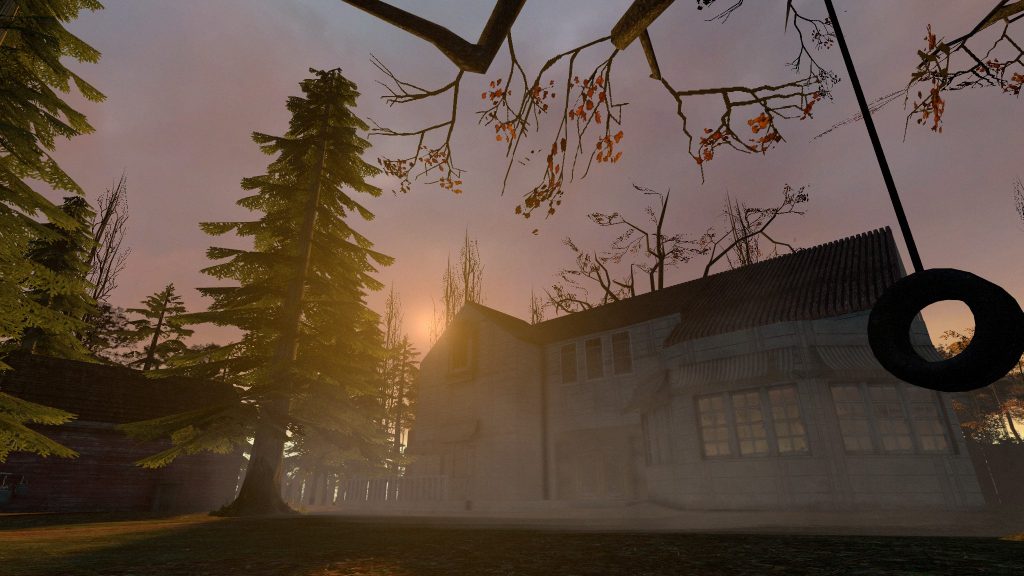


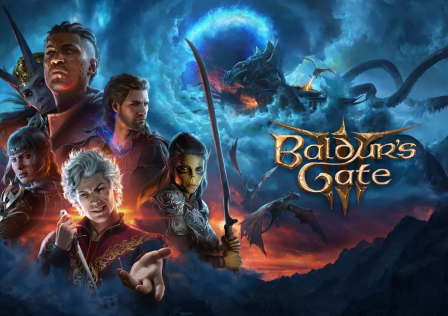
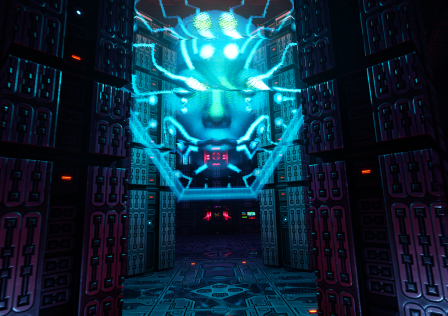
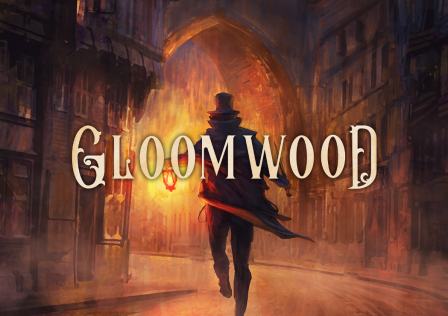

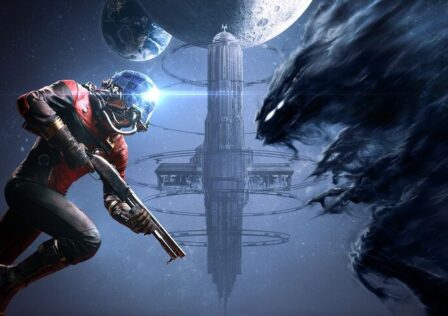
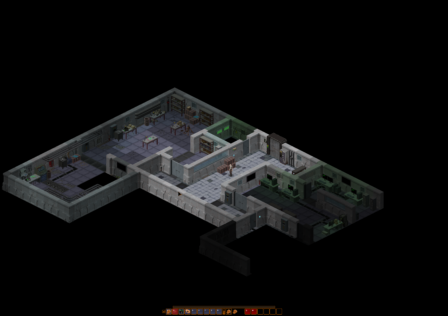
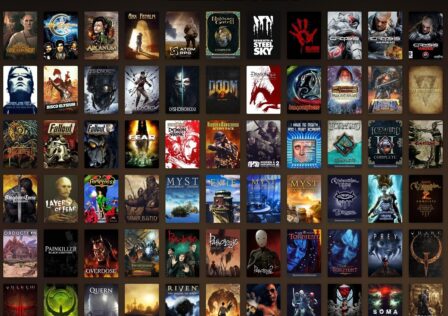
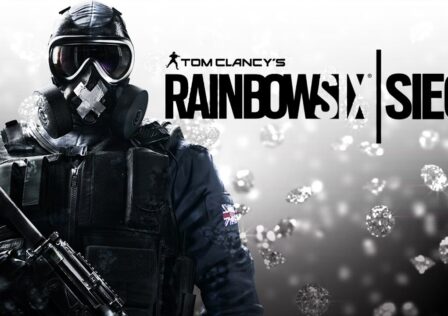

[…] and loot. That’s right; side quests can be randomized and change for every playthrough, as Underhell shows. Not every game needs this, but it is an underused concept. Randomness can be a great thing […]
[…] campaign, since you’ll get it for free in the future. Think of it like The Walking Dead or Underhell, but with free episodes since BIS is aware that a campaign, among other things, are needed in order […]
[…] Underhell Chapter 1 Review […]
[…] survival horror gameplay you’ll ever find. Survival horror is alive only on PC, as seen in Underhell, modded S.T.A.L.K.E.R., Metro series, modded Fallout, and this game. Most zombies walk slowly, but […]
[…] fought over this spot, but in the end we decided to go with the first encounter with Igor in Underhell chapter 1. This free mod is actually one of the best games of 2013, and it’s very strong in […]
[…] I would like to suggest to Resident Evil fans Underhell, a free Source mod which we have reviewed here. This is perhaps the one game (or in this case standalone mod) I have played that somewhat takes […]